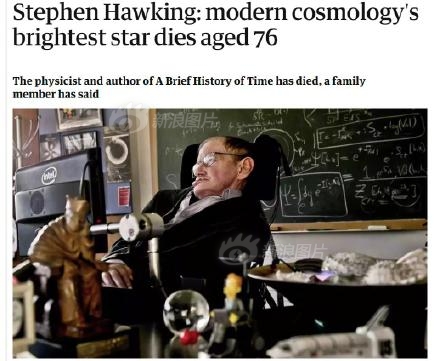The Hubble Space Telescope captured a brilliant image of spiral galaxy NGC 3254, which has a particularly luminescent and active core emitting as much energy as the rest of the galaxy combined.
NGC 3254 is classified as a Seyfert galaxy. Seyfert galaxies are defined by their extremely active centers. Why are they so active? They each have a supermassive black hole in them.
The intense gravitational pull of supermassive black holes whip gases, dusts, stars, planetary bodies, and other material into a frenzy of high-speed collisions as they're yanked inward. As all that space stuff rips apart, smashes together, and spaghettifies, temperatures soar.
While it's true that the gravitational pull of black holes is so strong that even light can't escape, black holes could be described as messy eaters. As they eat (or "accrete") material, they also expend energy, which blasts outward as heat and light.

 The full image of NGC 3254 in its bright, beautiful glory.Credit: ESA/Hubble & NASA, A. Riess et al.
The full image of NGC 3254 in its bright, beautiful glory.Credit: ESA/Hubble & NASA, A. Riess et al.Hubble's image of the NGC 3254 galaxy is a composite of both visible and infrared light spectrums, which allows us to get a clear, detailed visual of what's going on. If other spectrums were used, the core would look even brighter.
NGC 3254 spins out in space roughly 118 million light-years away from Earth. It was first documented by astronomer and composer William Herschel in 1785.
SEE ALSO:The most stunning space photos of 2021 so farThe bright blue light that stands out in the top center of the Hubble image, toward the outer rim of the galaxy's spiral, is a star-exploding supernova first spotted in 2019. Although we're just seeing it now, the supernova actually happened roughly 118 million years ago.
While NGC 2154 is a spiral galaxy similar to our own Milky Way, it is much more active. The Milky Way is not classified as a Seyfert galaxy. Only about 10% of galaxies may fit that Seyfert description — which may seem low, but there are billions, perhaps trillions of observable galaxies around us. That's a lot of highly active black holes.
(责任编辑:娛樂)
 Fake news reports from the Newseum are infinitely better than actual news
Fake news reports from the Newseum are infinitely better than actual news Google makes it easy to pay for transit and parking in Maps and Pay
Google makes it easy to pay for transit and parking in Maps and Pay Even NASA's helicopter on Mars has to wait for software updates
Even NASA's helicopter on Mars has to wait for software updates Border agents can search phones without a warrant, court rules
Border agents can search phones without a warrant, court rules J.K. Rowling makes 'Harry Potter' joke about Olympics event
J.K. Rowling makes 'Harry Potter' joke about Olympics eventDonald Trump's tangled web of Russian influence
 Donald Trump has had ties to Russia for decades, but they've thickened as his campaign for the White
...[详细]
Donald Trump has had ties to Russia for decades, but they've thickened as his campaign for the White
...[详细]Iceland volcanic eruption: Feast your on eyes on fresh lava flows
 Earth's grandeur is spilling out.The Icelandic Meteorological Office reported Friday evening that la
...[详细]
Earth's grandeur is spilling out.The Icelandic Meteorological Office reported Friday evening that la
...[详细]'Jeopardy!' has missed the mark with guest hosts so far
 Longtime Jeopardy! host Alex Trebek left a gaping hole in the show when he died last November. Perha
...[详细]
Longtime Jeopardy! host Alex Trebek left a gaping hole in the show when he died last November. Perha
...[详细]Lyft offers free rides to COVID
 Earlier this month, Uber announced free and discounted rides to Walgreens pharmacies for COVID-19 va
...[详细]
Earlier this month, Uber announced free and discounted rides to Walgreens pharmacies for COVID-19 va
...[详细] When Honda revealed its stunning and grandparent-scaring Civic Hatchback Prototype earlier this year
...[详细]
When Honda revealed its stunning and grandparent-scaring Civic Hatchback Prototype earlier this year
...[详细]NASA's Perseverance Mars rover has a hidden 'family portrait'
 In 1972, astronaut Charles Duke left a family portrait on the moon. Now, almost 50 years later, anot
...[详细]
In 1972, astronaut Charles Duke left a family portrait on the moon. Now, almost 50 years later, anot
...[详细]'The Office' stars chat about the show's hilarious 'Survivor Man' episode
 In 2007, while millions of people were obsessing over The Office, Steve Carell was obsessing over th
...[详细]
In 2007, while millions of people were obsessing over The Office, Steve Carell was obsessing over th
...[详细]Google's I/O 2021 developer conference will be virtual and 'free'
 Not only is Google I/O actually happening this year, but it's also free to "attend." Due to the ongo
...[详细]
Not only is Google I/O actually happening this year, but it's also free to "attend." Due to the ongo
...[详细] The group behind a growing list of celebrity social media breaches has struck again, this time takin
...[详细]
The group behind a growing list of celebrity social media breaches has struck again, this time takin
...[详细]Snap diversity report debuts new anti
 Snap engineers are working to root out racial bias from the company's products, even as improving di
...[详细]
Snap engineers are working to root out racial bias from the company's products, even as improving di
...[详细]Major earthquake and multiple aftershocks rock central Italy

How battery swapping could reduce EV charge time to just 10 minutes
